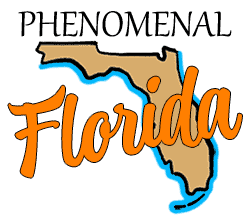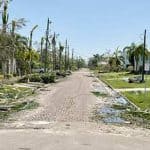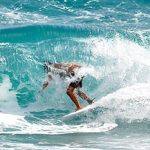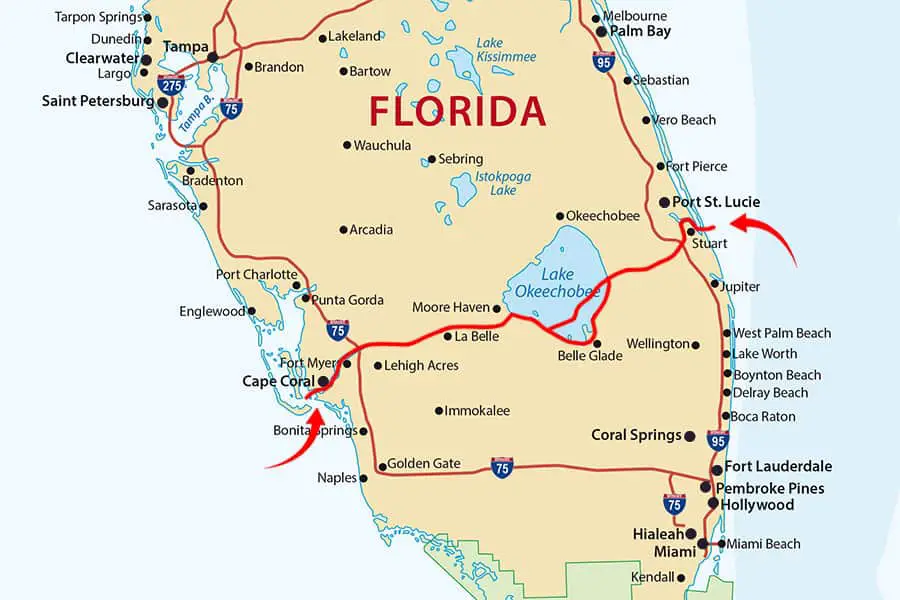
Everybody knows that Florida is one of the best boating states in America. The state has 1,350 miles of navigable shoreline, and it is widely considered to be a boaters’ paradise. Of course, we all know you can boat around Florida, but can you boat across Florida?
You can boat across Florida by sailing on the Okeechobee Waterway, a 154-mile-long route that crosses from the Gulf of Mexico at Fort Myers to the Atlantic Ocean near Stuart. Vessels up to 50 feet wide and 250 feet long can safely sail the route, as long as they draft less than ten feet.
Why did they build a canal across Florida? How do the locks work, and how many are there? Can you get across it in a sailboat, or only on powered boats? Read on to learn about these things and more.
Boating Across Florida
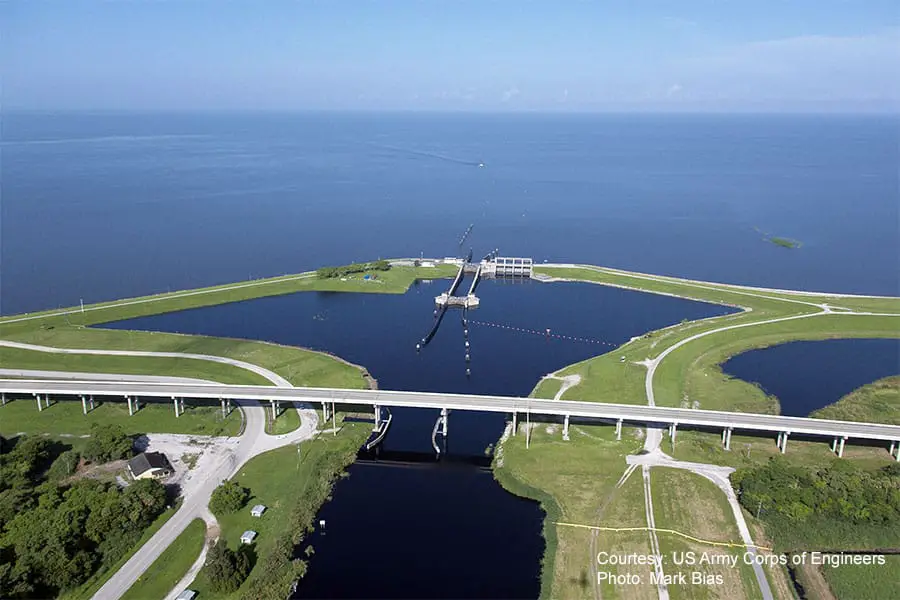
As I mentioned, Florida is a boating paradise. The state is home to some of the best recreational boating on earth in places like Key Largo and Tampa Bay. In addition, inland places like Lake Okeechobee and the Chain of Lakes are popular destinations for boats and even floatplanes. But most people probably don’t know that you can actually boat all the way across Florida.
The Okeechobee Waterway is a canal that crosses the state of Florida and connects the Atlantic with the Gulf of Mexico. The route is 154 miles from end to end, and many recreational boaters will make a voyage of the canal, taking their time along the way to stop in at different ports and marinas. The Waterway has several locks along the way that raise and lower boats and double as recreation areas for anglers and campers.
Why does the Okeechobee Waterway need locks? The lake is not actually at sea level: it sits about 12-18 feet above sea level. If the channel were just dug from the sea to the lake, Lake Okeechobee would drain into the ocean, which would be a significant problem for most of South Florida.
The locks allow vessels to travel up to and down from Lake Okeechobee without draining the lake into the sea.
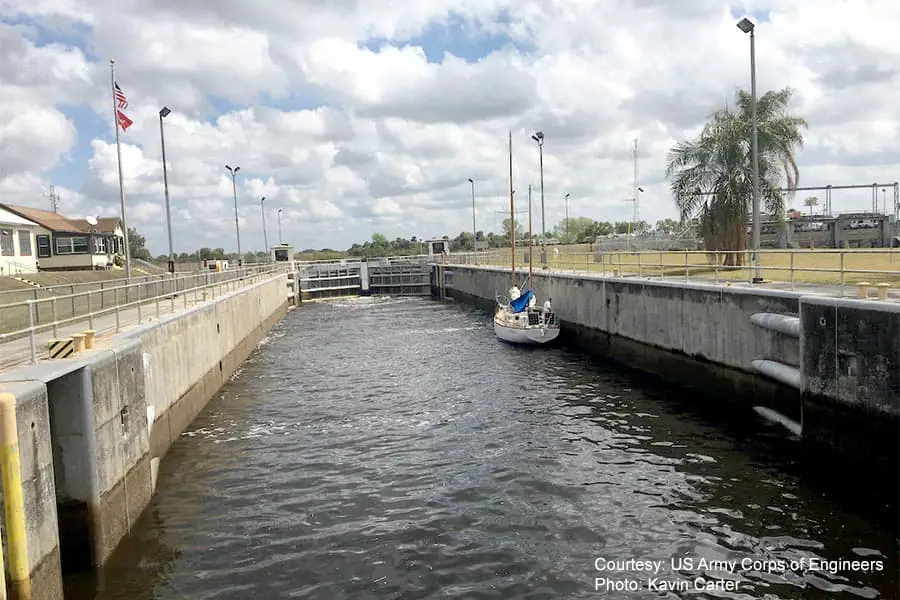
The Okeechobee Waterway has five locks. The locks are public recreation areas: most have picnic facilities and camping areas, which provide citizens who don’t have boats with a way to enjoy the Waterway.
Conditions on the Okeechobee Waterway vary. As the route contains some sensitive habitats and ecosystems, parts of the route are posted as no-wake zones or with specific speed limits. Unless otherwise posted, mariners traveling on the Okeechobee Waterway should follow Florida’s boating regulations.
How Much Does It Cost To Sail the Okeechobee Waterway?
The Okeechobee Waterway is free to sail! If, however, you wish to moor or dock at a marina along the route, you’ll need to pay whatever the marina operator is charging. But, other than docking fees and operating expenses, mariners can enjoy transit all the way across the state without having to pay a nickel to use the locks.
Why Was the Okeechobee Waterway Built?
The Army Corps of Engineers built the Okeechobee Waterway in 1937 to facilitate the transit of ships across the state of Florida. Mariners who sailed the route would save time by cutting through canals that connect the Gulf of Mexico and the Atlantic Ocean to Lake Okeechobee. As a result, vessels traveling to, say, Tampa could arrive in port faster than if they had to sail all the way around the Keys and back up Florida’s Gulf Coast.
Phenomenal Florida Fun Fact: The Okeechobee Waterway is not just a route for vessels – it’s also part of a comprehensive flood-control project managed by the U.S. Army Corps of Engineers that protects more than 16,000 square miles of land between Orlando and the Everglades.
Other Posts of Interest
- Are Key West And The Florida Keys The Same?
- Why Does Florida Have So Many Canals?
- Is It Illegal To Take Shells From Florida Beaches?
- Is Cape Canaveral The Same As The Kennedy Space Center?
How Many Locks Are on the Okeechobee Waterway?
There are five locks you will pass through on the Okeechobee Waterway. We’ll discuss them traveling East to West.
St. Lucie Lock and Dam is the first lock along the Okeechobee Waterway. As you sail south down the St. Lucie River, you’ll encounter this lock at mile marker 15.1, just inland from the city of Stuart, Florida. This lock chamber is 50 feet wide by 250 feet long with a depth of 10 feet. The lock will lift your vessel 14.5 feet to the next section of the waterway.
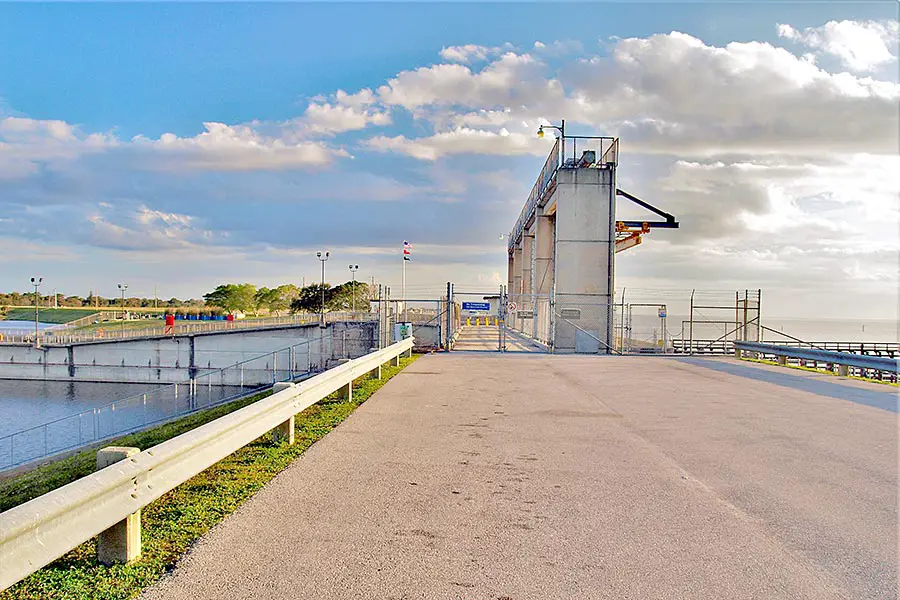
The next lock on the voyage is the Port Mayaca Lock, located at mile marker 39. Port Mayaca Lock chamber is 400 feet long and 56 feet wide, with a depth of 14 feet. Mariners will only gain about a foot here before continuing into Lake Okeechobee itself. Here, you can choose to sail directly across the lake — the faster route — or you can sail the Rim Route, which traces the southern shore of the lake. Both routes rejoin the Okeechobee Waterway at Clewiston, Florida.
The Julian Keene Jr. Lock, also called the Moore Haven Lock, is located at mile marker 78. Julian Keene Lock chamber is 250 feet long, 50 feet wide, and 10 feet deep. This lift has an altitude change of only 18 inches before the Waterway continues towards the Gulf of Mexico. About 15 miles later, mariners will encounter the Ortona Lock and Dam at mile marker 93.5. Ortona will drop westbound vessels about 8 feet. This lock chamber is 250 feet long, 50 feet wide, and 12 feet deep.
The fifth and final lock is the W.P. Franklin Lock, located at mile marker 121.4. This lock chamber is 400 feet long and 56 feet wide, with a depth of 14 feet. The Franklin Lock has a drop of about 2.5 feet, which puts you on the level with the sunny waters of the Gulf of Mexico and completes your voyage across Florida!
How Long Does It Take To Go Through the Okeechobee Waterway?
Your transit time across the Okeechobee Waterway obviously depends on your speed: a sailboat with a 10hp onboard engine is going to experience a much slower crossing than a cigarette boat with 300 horses behind it. If your boat can safely sustain 20 knots across the Waterway, you can make the passage in about 8 hours. A more realistic estimate is 10 to 15 hours; boats traveling at speeds below 7 knots will require at least 20 hours.
There are plenty of interesting sights to see along your journey. Traveling east to west, the city of Stuart is an excellent place to stock up your vessel with any essentials, and as an added bonus, Stuart has a ton of great restaurants and other amenities that you can enjoy.
Another fantastic port is Indiantown Marina, where you can tie up and enjoy a pleasant evening at the marina before crossing into Lake Okeechobee. Finally, many mariners enjoy staying for a few nights in or around Fort Myers: there’s a ton of great stuff to do around this South Florida city.
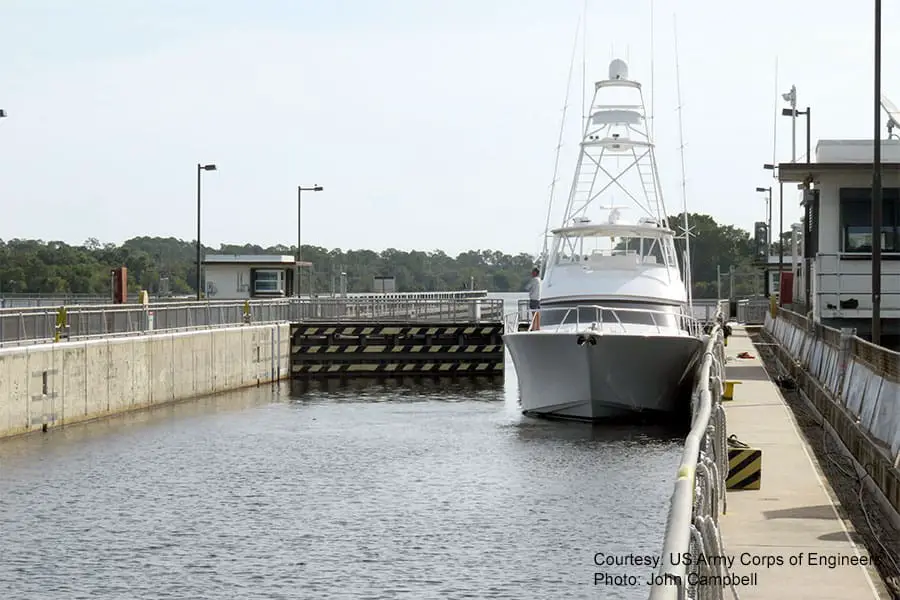
What Is the Lowest Bridge on the Okeechobee Waterway?
The lowest bridge on the Okeechobee Waterway is at Port Mayaca. The Port Mayaca Railroad Bridge has a clearance of only 49 feet. If your mast is greater than this height, you can engage the services of local boat-tipper Billy Owen, who will tie up to your boat and use a unique system of pumps and barrels to tip your sailboat to the side.
He uses a special plumb line tied to the tip of your mast to determine when your boat is heeled over enough to pass under the bridge safely.
What Is the Maximum Boat Size for Okeechobee Waterway?
The locks determine the maximum boat size for the Okeechobee Waterway. While the Okeechobee Waterway is technically a canal, it is not as accommodating as the Suez Canal or the Panama Canal. The controlling dimensions on the Okeechobee Waterway are those of the locks.
The smallest locks on the Okeechobee Waterway is 50 feet wide, 250 feet long, and a draft of 10 feet. If your vessel can’t safely fit into a lock with those dimensions, it’s too big for the canal. Since cargo ships are far too large for the waterway, most of the shipping across the canal is done on barges and tow vessels.
Can a Sailboat Cross the Okeechobee Waterway?
Sailboats can absolutely make the transit across the Okeechobee Waterway. The only limiting factor for sailboats is size and height.
For example, if your mast exceeds 49 feet, you won’t be able to pass under the rail bridge at Port Mayaca (but you can engage the services of Billy, as I mentioned above). Likewise, in the unlikely event that your sailing vessel exceeds 250 feet in length or 50 feet in width, you won’t be able to fit through the locks.
Boating Across Florida: Fun For The Family
Florida is (rightfully) revered as a perfect place for boaters. The fair weather, sprawling coastline, and excellent aquatic activities that Florida offers make it one of the best places in America to go boating! The next time you’re heading out into Florida’s gorgeous blue waters, consider taking a trip across the Okeechobee Waterway. Sailing from the Ocean to the Gulf is a fun and unique way to experience the waters of the Sunshine State.
